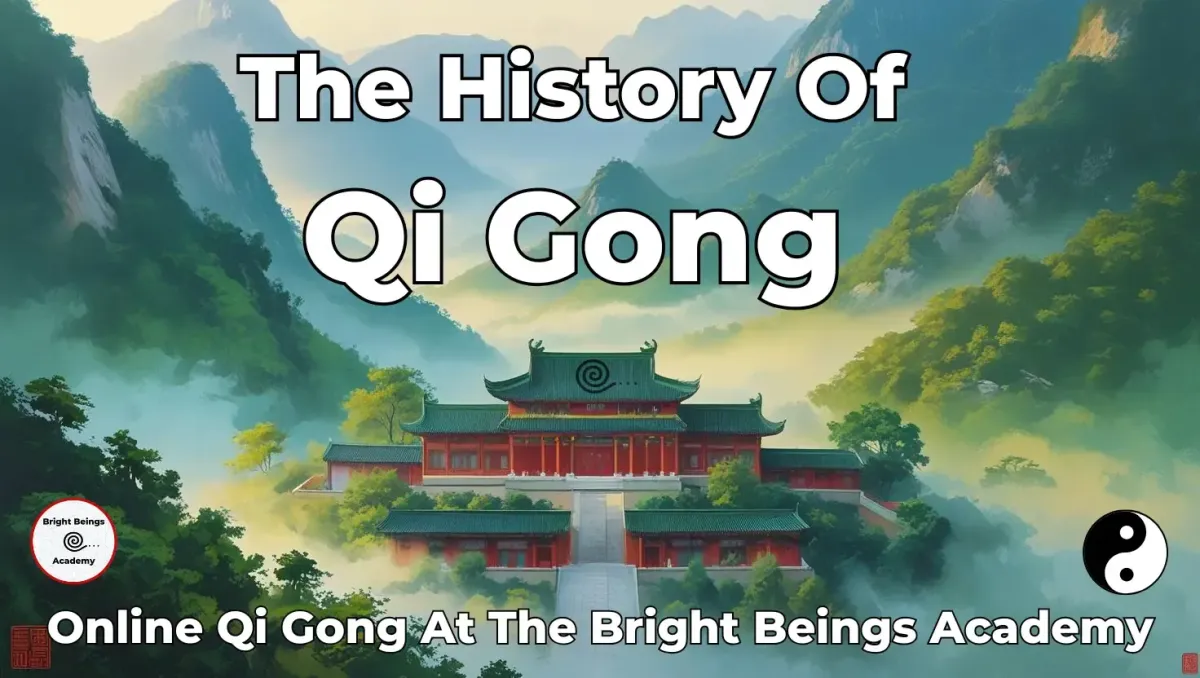
History of Qi Gong: From Ancient Healing to Modern Practice
Qi Gong may seem like a modern wellness trend, but its history stretches back thousands of years. Rooted in ancient Chinese philosophy and medicine, Qi Gong was originally practiced for health, longevity, and spiritual development.
Today, it is one of the most widely practiced forms of energy work in the world—valued for its gentle movements, stress relief, and deep healing benefits. To understand why Qi Gong is so powerful, it helps to look at its origins and the traditions that shaped it.
Related reading: [The Healing Power of Qi Gong: Ancient Practice, Modern Benefits].
What Does “Qi Gong” Mean?
Qi (氣): Often translated as “life force energy” or “vital energy.”
Gong (功): Meaning “skill cultivated through practice.”
Together, Qi Gong means the skill of working with life energy.
This focus on energy is what makes Qi Gong different from exercise. It is not just about moving the body but also about cultivating the flow of Qi to bring balance and harmony.
Related reading: [Qi Gong Breathing Techniques: Unlock the Power of Your Breath].
Ancient Origins of Qi Gong
Historians trace Qi Gong back more than 4,000 years. Its development was influenced by several streams of Chinese culture:
Shamanic traditions. Early forms of Qi Gong involved ritual movement and breathing for healing and connecting with nature.
Chinese medicine. Qi Gong became a way to keep Qi flowing smoothly through the meridians, preventing illness.
Daoism. Daoist monks practiced Qi Gong to align with the Dao (the Way), seeking longevity and harmony with nature.
Buddhism. When Buddhism came to China, monks adapted Qi Gong as a form of moving meditation to calm the mind.
Martial arts. Qi Gong was incorporated into martial traditions to build strength, resilience, and inner power.
Related reading: [Qi Gong vs Tai Chi: What’s the Difference?].
Qi Gong Through the Dynasties
Han Dynasty (206 BCE – 220 CE): Medical Qi Gong practices were recorded in texts like the Huangdi Neijing (Yellow Emperor’s Classic of Medicine).
Tang Dynasty (618 – 907 CE): Qi Gong became more systematised, practiced in temples and courts.
Song Dynasty (960 – 1279 CE): Daoist and Buddhist monks refined breathing and meditation techniques.
Ming and Qing Dynasties (1368 – 1912 CE): Martial Qi Gong became closely linked with Kung Fu and Tai Chi.
Each era added to the richness of Qi Gong, blending health, philosophy, and spirituality.
Related reading: [Qi Gong for Spiritual Growth: Awakening Inner Peace and Flow].
The Cultural Revolution and Modern Revival
In the mid-20th century, Qi Gong faced suppression during the Cultural Revolution in China. Many traditional practices were banned, including spiritual teachings.
But Qi Gong survived—kept alive by dedicated masters. By the 1980s, China began to officially promote Qi Gong again, this time emphasising its health benefits and making it accessible to the public.
From there, Qi Gong spread across the world. Today, millions practice Qi Gong in parks, studios, and online classes.
Related reading: [Qi Gong for Beginners: The Complete Guide to Energy, Health, and Inner Balance].
Different Styles of Qi Gong
Qi Gong is not a single practice but an umbrella term for many styles. These include:
Medical Qi Gong. Focused on health, healing, and longevity.
Daoist Qi Gong. Emphasising harmony with nature and energy cultivation.
Buddhist Qi Gong. Rooted in meditation and compassion.
Martial Qi Gong. Building inner strength and resilience for combat.
Modern Qi Gong. Blending traditional techniques with today’s wellness practices.
Related reading: [Morning Qi Gong Routine: Start Your Day with Energy and Clarity].
Why the History Matters
Knowing the history of Qi Gong helps us appreciate:
Its deep cultural and spiritual roots.
Why it has endured for thousands of years.
How it continues to evolve for modern life.
When you practice Qi Gong, you’re connecting to a tradition that has supported health and spiritual growth for generations.
Related reading: [Qi Gong for Seniors: Gentle Exercises for Longevity and Vitality].
Testimonials from Students
“I love that Qi Gong connects me to something ancient. It feels like I’m part of a living tradition.”
“Understanding the history makes me appreciate the depth of each movement.”
“It’s amazing that something practiced for thousands of years still feels fresh and relevant today.”
FAQs About the History of Qi Gong
1. How old is Qi Gong?
Over 4,000 years, with roots in shamanism, medicine, and philosophy.
2. Is Qi Gong connected to martial arts?
Yes. Martial Qi Gong developed alongside Kung Fu and Tai Chi.
3. Was Qi Gong always for health?
Not only. It was practiced for healing, spirituality, and inner strength.
4. Why did Qi Gong face suppression in China?
During the Cultural Revolution, spiritual practices were restricted.
5. Is modern Qi Gong different from ancient forms?
Yes, but the essence—cultivating life energy—remains the same.
Related reading: [Qi Gong Meditation: Stillness, Breath, and Energy Flow].
How to Practice Today
Though ancient, Qi Gong has never been more relevant. In today’s stressful world, it offers calm, healing, and connection.
At Bright Beings Academy, we honour the ancient roots of Qi Gong while teaching practices that fit modern life. Our online Qi Gong live classes make it easy to learn, wherever you are.

If you’re ready to feel lighter, calmer, and more energised, join our live Qi Gong classes—Sundays at 11 am & Thursdays at 7 pm—and begin your transformation today.
Click Here For The Live Classes At The Bright Beings Academy
Summary
Qi Gong’s history stretches across thousands of years, shaped by medicine, spirituality, and martial traditions. From shamanic roots to its modern revival, Qi Gong has always been about cultivating energy, balance, and harmony.
In this article, you discovered:
The meaning of Qi Gong.
Its origins in Chinese culture.
How it evolved through dynasties.
Its survival and global spread today.
Qi Gong is not just exercise—it is a living tradition of healing and self-discovery.
Ready to be part of this tradition? Click here to join Bright Beings Academy’s Online Qi Gong Live Classes.
Further Reading On Qi Gong
The Healing Power of Qi Gong → How modern Qi Gong connects to ancient roots.
Qi Gong vs Tai Chi → The shared and separate histories of both practices.
Qi Gong for Spiritual Growth → Daoist and Buddhist influences on Qi Gong.
I look forward to connecting with you in the next post.
Until then, be well and keep shining.
Peter. :)
